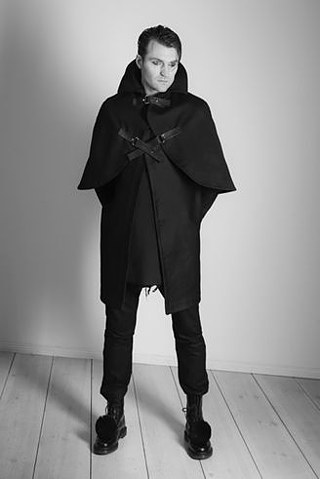Transgender
The power of fashion

Fashion exercises an avant-garde function for socially relevant discourse. It reflects the issue of transgender and ensures that the boundary between male and female becomes more permeable.
When William Fan designs a collection, he thinks in terms of material and silhouettes. Of a combination of fine materials such as silk and wool and of the cuts of functional workwear. What he does not think about are men and women. Because Fan’s style knows no gender – he designs classic shirts, casual trousers, jackets and coats. The single concession he makes: all his clothing comes in the sizes XS to XL, because people’s bodies, after all, have different heights and widths.

Playing with identities
“I don’t put a ‘for men’ or ‘for women’ label on my fashion; that’s no longer the spirit of the times”, says Fan, who lives and works in Berlin and Hong Kong. He is regarded as one of the best young fashion designers in Germany.When the likewise Berlin-based designer Esther Perbandt is asked whether her fashion is androgynous, she talks of “gender-bending models”. It is about being “in-between”. For Perbandt, fashion is a play of identities. “It’s a game and no one demands a clear affiliation.” In a legendary show for her Berlin label Sadak, the designer Saša Kovačević sent men in colourful burkas onto the catwalk. It was the most acclaimed show of the Berlin Summer Fashion Week 2015.

There have been transgender models before, but the transgender aspect was not broached. Nor is the question of gender identity new. David Bowie already played with ambiguity in the 1970s as Ziggy Stardust, as did Amanda Lear and Grace Jones, and more recently Conchita Wurst. The blurring of gender identities has a long history – for example, in the tradition of travesty and drag queens.
Dissolution of gender boundaries
In this, fashion has a very decisive role; it is fashion, after all, that furnishes the codes according to which we know whether clothed people are to be recognized as men or women and that help us to present ourselves as representatives of the other gender. Disguise and mistaken identity are a popular theme of comedies, whether in Shakespeare’s As You Like It or Billy Wilder’s Some Like It Hot.
Fashion treats the issue of gender identity in a variety of ways. It does so in its own playful, transitory and also a bit superficial way. And yet precisely because fashion, with its avant-garde function, attracts so much attention, it becomes an important factor in gaining recognition for the issue of transgender and so for achieving its social acceptance.





